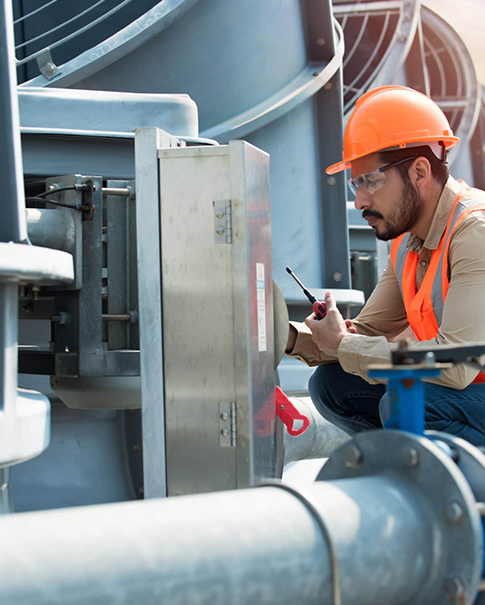
In daily life and production, many surface treatment processes use chillers, such as electroplating, micro-arc oxidation, electrophoretic coating, anodizing, vacuum coating, etc.
Chillers for electroplating (electroplating chillers, electroplating water chillers, electroplating refrigeration units, electroplating chillers) are widely used in zinc plating, nickel plating, chromium plating, copper plating, tin plating, aluminum oxidation and other enterprises. Their micro-arc oxidation production lines, electroplating production lines, electrophoretic production lines, and anodizing production lines will use this process. It includes many physical and chemical methods such as pre-treatment, electroplating, coating, chemical oxidation, thermal spraying, etc., using acidic or alkaline solutions to react chemically with oxides and oil stains on the surface of the workpiece, so that they are dissolved in acidic or alkaline solutions to remove rust, oxide scale and oil stains on the surface of the workpiece. In these process processing, temperature has an important influence on the surface quality and efficiency of electroplating, because when the solution temperature is too high, it will overheat and cause waste of energy and evaporation of the plating solution. And it will also cause damage to the processed products themselves. The electroplating special chiller solution is designed to solve this problem. In the electrogalvanizing process, the appropriate temperature range is 20℃-40℃, and the chiller water temperature is usually set to about 10℃ to cool the zinc plating solution.
Vacuum coating chillers are suitable for various surface treatment fields such as vacuum coating. They are ideal supporting equipment for scientific instruments such as ultra-high vacuum sputtering instruments, X-ray machines, vacuum furnaces, coating machines, accelerators, etc. The medium-frequency magnetron sputtering target in the vacuum coating equipment has a high frequency and a large current. When it is fired, it will generate high temperature and deform the gun. Therefore, a medium-hole tube is used as a conductor and water is added in the middle to cool the gun. Hengde vacuum coating chiller can provide cooling water with constant temperature, constant pressure and constant flow, and can accurately control the temperature of the vacuum coating machine to ensure the high quality and high efficiency of the plated parts.
Anodizing process: This process requires strong electrical bonding at high temperature to complete the surface treatment, which will generate a lot of heat. The chiller uses a heat exchanger or a coil containing liquid to reduce the temperature level, maintain normal temperature, protect the industrial environment from high temperature, ensure the smooth progress of the process and the quality of the product. For example, when aluminum oxidation is carried out, the temperature of the solution in the oxidation tank will rise. When it is higher than a certain temperature, the quality of aluminum oxidation will be affected and the expected effect cannot be achieved. Therefore, it is necessary to use an aluminum oxidation chiller to cool the solution in the tank. The aluminum oxidation industry is very corrosive and special anti-corrosion treatment must be used. According to the temperature, it can be divided into high-temperature oxidation (ordinary oxidation) and low-temperature oxidation (hard aluminum oxidation). High-temperature oxidation generally controls the temperature at around 20°C, and an ordinary chiller can be used; while the low-temperature oxidation temperature is between -4 and 4°C, and a low-temperature chiller must be selected (ethylene glycol must be added to the water).
Micro-arc oxidation process: During the micro-arc oxidation process, a large amount of heat will be generated, and the reaction system needs to be cooled. The chiller can provide a stable low-temperature environment for the process, ensure the normal progress of the reaction, and improve the quality and performance of the oxide film.
Electrophoretic coating process: In this process, the paint needs to be electrophoretically deposited at a certain temperature. If the temperature is too high, it will affect the performance and coating effect of the paint. The chiller can cool the electrophoretic paint, keep the temperature of the paint within a suitable range, and improve the quality and efficiency of the coating.
